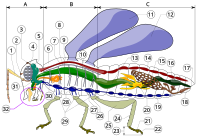
Splenomegaly induced by anemia impairs T cell movement in the spleen partially via EPO.
Sign Up to like & getrecommendations! Published in 2019 at "Molecular immunology"
DOI: 10.1016/j.molimm.2019.06.021
Abstract: The spleen is an important secondary lymph organ. Splenomegaly induced by anemia could affect the function of spleen in immune responses. We observe that anemia induced in mice with reduced peripheral T cell trafficking to… read more here.
Keywords: cell movement; induced anemia; splenomegaly induced; epo ... See more keywords

Effect of amino acid substitution of CAPRICE on cell-to-cell movement ability in Arabidopsis root epidermis.
Sign Up to like & getrecommendations! Published in 2018 at "Developmental biology"
DOI: 10.1016/j.ydbio.2018.01.002
Abstract: An R3-type MYB transcription factor, CAPRICE (CPC), is known to promote root hair cell differentiation in Arabidopsis root epidermis. The CPC protein moves from non-hair cells to the neighboring cells, and acts as an inducer… read more here.
Keywords: cell movement; cell cell; cpc; root ... See more keywords

Epithelial invagination by a vertical telescoping cell movement in mammalian salivary glands and teeth
Sign Up to like & getrecommendations! Published in 2020 at "Nature Communications"
DOI: 10.1038/s41467-020-16247-z
Abstract: Epithelial bending is a fundamental process that shapes organs during development. Previously known mechanisms involve cells locally changing shape from columnar to wedge-shaped. Here we report a different mechanism that occurs without cell wedging. In… read more here.
Keywords: cell movement; glands teeth; invagination; cell ... See more keywords

Coupled excitable Ras and F-actin activation mediates spontaneous pseudopod formation and directed cell movement
Sign Up to like & getrecommendations! Published in 2017 at "Molecular Biology of the Cell"
DOI: 10.1091/mbc.e16-10-0733
Abstract: Chemotaxis is the mechanism by which cells move in the direction of chemical gradients. The central circuit connecting basal movement and gradient sensing is unknown. Ras activation and F-actin form one coupled excitable system, which… read more here.
Keywords: cell movement; movement; coupled excitable; excitable ras ... See more keywords

The conserved aromatic residue W122 is a determinant of potyviral coat protein stability, replication, and cell‐to‐cell movement in plants
Sign Up to like & getrecommendations! Published in 2020 at "Molecular Plant Pathology"
DOI: 10.1111/mpp.13017
Abstract: Abstract Coat proteins (CPs) play critical roles in potyvirus cell‐to‐cell movement. However, the underlying mechanism controlling them remains unclear. Here, we show that substitutions of alanine, glutamic acid, or lysine for the conserved residue tryptophan… read more here.
Keywords: cell movement; cell; cell cell; virus ... See more keywords